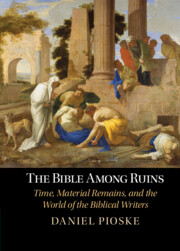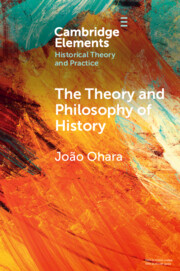Refine search
Actions for selected content:
5 results

Testimony and Historical Knowledge
- Authority, Evidence and Ethics in Historiography
-
- Published online:
- 29 July 2025
- Print publication:
- 21 August 2025
-
- Element
-
- You have access
- Open access
- HTML
- Export citation
1 - Global Europe
-
-
- Book:
- Globalizing Europe
- Published online:
- 06 March 2025
- Print publication:
- 13 March 2025, pp 1-26
-
- Chapter
-
- You have access
- HTML
- Export citation
7 - Queer Theory and the History of Sexuality
-
-
- Book:
- The Cambridge World History of Sexualities
- Published online:
- 26 April 2024
- Print publication:
- 16 May 2024, pp 137-158
-
- Chapter
- Export citation

The Bible Among Ruins
- Time, Material Remains, and the World of the Biblical Writers
-
- Published online:
- 11 October 2023
- Print publication:
- 12 October 2023

The Theory and Philosophy of History
- Global Variations
-
- Published online:
- 04 August 2022
- Print publication:
- 18 August 2022
-
- Element
- Export citation
